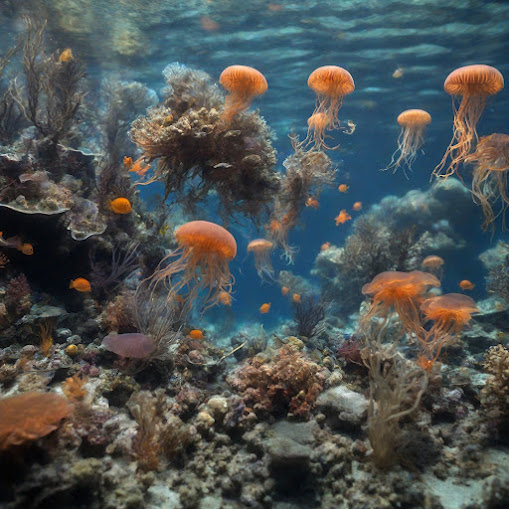Tsunamis
Tsunamis
The Hidden Dangers of the Deep
Tsunamis
are one of the most devastating natural disasters that can strike a coastal
community. These massive waves of water can be caused by earthquakes, volcanic
eruptions, or landslides beneath the ocean. Tsunamis can travel thousands of
miles across the open ocean at speeds of up to 500 miles per hour. When a
tsunami reaches shallow water near the coast, it slows down but grows in
height, sometimes reaching heights of over 100 feet.
Tsunamis
can cause widespread destruction when they crash ashore. They can inundate
coastal communities, sweep away buildings and infrastructure, and cause loss of
life. Tsunamis can also trigger secondary disasters, such as fires and floods.
In recent
years, scientists have made significant progress in understanding and predicting
tsunamis. However, tsunamis remain a serious threat to coastal communities
around the world.
Exclusive
Interview with Tsunami Expert
In an
exclusive interview with Bard, tsunami expert Dr. Maria Ana Baptista discussed
the latest research on tsunamis and the steps that can be taken to mitigate
their impact.
Bard: What are
the biggest challenges facing scientists in predicting and warning of tsunamis?
Dr.
Baptista: One of the biggest challenges is that tsunamis can be generated
by a variety of events, including earthquakes, volcanic eruptions, and
landslides. This makes it difficult to develop a single model that can
accurately predict tsunamis from all sources.
Another
challenge is that the speed of tsunamis can vary depending on the depth of the
water and the shape of the coastline. This makes it difficult to issue timely
warnings for all coastal communities.
Bard: What are
some of the steps that coastal communities can take to mitigate the impact of
tsunamis?
Dr.
Baptista: One of the most important steps is to develop early warning
systems. These systems can detect tsunamis and issue warnings to coastal
communities before the waves reach shore.
Another
important step is to develop evacuation plans. These plans should identify safe
evacuation routes and shelters for coastal residents.
Coastal
communities can also take steps to reduce the vulnerability of their
infrastructure to tsunamis. For example, buildings and other structures can be
elevated to reduce the risk of flooding.
Bard: What is
your message to people who live in coastal areas at risk of tsunamis?
Dr.
Baptista: My message is to be prepared. Learn about the tsunami risks in
your area and develop a plan for what to do if a tsunami warning is issued.
It is
also important to stay informed about the latest tsunami research and warnings.
This information is available from a variety of sources, including government
agencies and scientific organizations.
Conclusion
Tsunamis
are a serious threat to coastal communities around the world. However, there are
steps that can be taken to predict, warn of, and mitigate the impact of
tsunamis. By being prepared and informed, coastal communities can reduce their
vulnerability to this devastating natural disaster.





